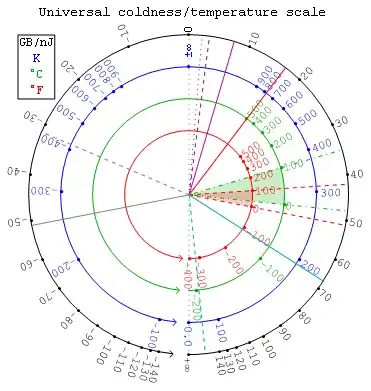Lord Kelvin defined the absolute temperature scale in the mid-1800s in such a way that nothing could be colder than absolute zero. Physicists later realized that the absolute temperature of a gas is related to the average energy of its particles. Absolute zero corresponds to the theoretical state in which particles have no energy at all, and higher temperatures correspond to higher average energies.
This and many other articles out there say that quantum gas can go below zero kelvin.They(the professors) teach that -273.15ºC is lowest temperature anything can attain and that's why it is called absolute zero.
My question is not about whether materials can or can't attain sub-0K temperatures. I'm asking, should we stop calling 0K as absolute zero?
